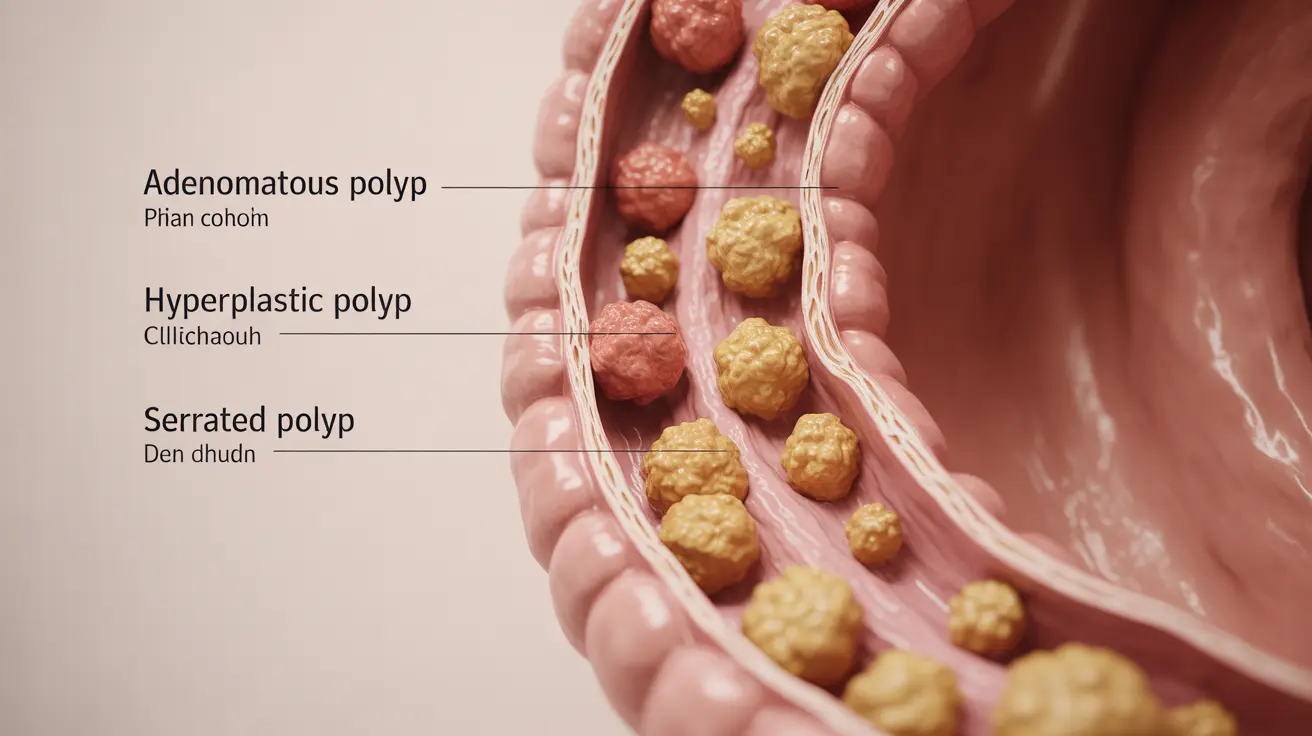Colon polyps are growths that develop on the inner lining of the colon or large intestine. While most polyps start as benign growths, some can develop into cancer over time, making it crucial to understand their types, detection methods, and prevention strategies. Regular screening and early detection play vital roles in maintaining colon health and preventing serious complications.
This comprehensive guide explores everything you need to know about colon polyps, from their various types to risk factors and prevention strategies. Understanding these aspects can help you take proactive steps in managing your digestive health.
Types of Colon Polyps and Cancer Risk
Different types of colon polyps carry varying levels of cancer risk. The most common types include:
Adenomatous Polyps
These are the most concerning type, accounting for about two-thirds of all colon polyps. They have a higher likelihood of becoming cancerous, especially if they're larger than 1 centimeter or show certain growth patterns under microscopic examination.
Hyperplastic Polyps
Generally considered low risk, these polyps are typically small and found in the lower colon. While they rarely become cancerous, their presence may indicate a need for closer monitoring.
Serrated Polyps
These polyps have a saw-tooth appearance when viewed under a microscope. Some serrated polyps, particularly those in the right colon, can have a higher risk of developing into cancer.
Detection and Removal Procedures
Several screening methods are available for detecting colon polyps:
- Colonoscopy: The gold standard for detection and removal
- Flexible sigmoidoscopy: Examines the lower portion of the colon
- CT colonography: Provides detailed images of the colon
- Stool-based tests: Can detect blood or DNA changes
When polyps are found during a colonoscopy, they are typically removed during the same procedure through a process called polypectomy. This procedure is usually painless and prevents potential progression to cancer.
Common Symptoms and Warning Signs
Many people with colon polyps don't experience symptoms, which is why regular screening is crucial. However, some may notice:
- Rectal bleeding
- Changes in bowel habits
- Abdominal pain
- Iron deficiency anemia
- Black stools
Risk Factors for Colon Polyps
Several factors can increase your likelihood of developing colon polyps:
- Age (especially over 50)
- Family history of polyps or colorectal cancer
- Inflammatory bowel disease
- Obesity
- Smoking
- Heavy alcohol consumption
- Sedentary lifestyle
- Poor diet high in processed foods
Prevention Strategies
Taking proactive steps can help reduce your risk of developing colon polyps:
- Maintain a healthy diet rich in fruits, vegetables, and fiber
- Exercise regularly
- Limit alcohol consumption
- Quit smoking
- Maintain a healthy weight
- Follow recommended screening guidelines
- Take calcium and vitamin D supplements (as advised by your healthcare provider)
Frequently Asked Questions
What are the different types of polyps found in the colon and which ones can lead to cancer? Adenomatous polyps have the highest risk of becoming cancerous, while hyperplastic polyps are typically benign. Serrated polyps can also carry cancer risk, particularly those found in the right colon.
How are colon polyps detected and what does the polyp removal procedure involve? Colon polyps are primarily detected through colonoscopy, which allows for immediate removal (polypectomy) if found. The procedure is performed under sedation and involves using specialized tools to remove polyps without causing pain.
What symptoms might indicate the presence of colon polyps? Common symptoms include rectal bleeding, changes in bowel habits, abdominal pain, and unexplained iron deficiency anemia. However, many people with polyps experience no symptoms.
What are the main risk factors that increase the chance of developing colon polyps? Key risk factors include age over 50, family history, inflammatory bowel disease, obesity, smoking, heavy alcohol use, and a sedentary lifestyle with poor dietary habits.
How can lifestyle changes and regular screenings help prevent colon polyps from becoming cancerous? Regular screenings can detect and remove polyps before they become cancerous. Lifestyle changes such as maintaining a healthy diet, exercising regularly, limiting alcohol, and quitting smoking can reduce the risk of polyp formation.




